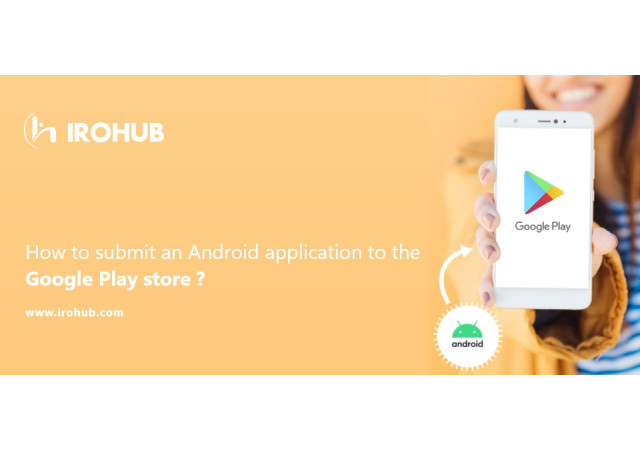No one can challenge the prevalence and dominance of the Google Play Store in the field of mobile apps. The field gets all the more set by the Play Store statistics that there are around 2.8 million apps on Play Store and that about 3739 apps get published on it daily. Estimates like these solidify how Play Store is an attractive option to upload your mobile app on. Now, if you are questioning “How to submit an app to Google Play Store” then end your search here. We have included end-to-end all about the means to upload an app to Google Play Store.
Prerequisite of Submitting App To Play Store
If this is your first time presenting your app to a gigantic platform, there are some prerequisites that you must take care of to triumphantly upload an app to Google Play Store. Let us see what they are.
1. Test Your Application
It is unnecessary to consider how significant testing your application is. No matter how many unbelievable features you have inserted into your app, if it does not work up to the expectations of the user, it will be discarded simply. In which case, you need to test your app as many times as practicable and be 100 percent certain that it is going to achieve remarkably.
2. Concise App Size
In terms of applications, the size matters a lot. Users do not feel willing to download an app that exerts too much space in their device storage. Moreover, Google only authorizes the app size to up to 50MB.
Although, if your app surpasses this limit, then you can employ Android APK’s Expansion file, to favorably upload the app to Play Store. This will break your app into components and each can be up to 2GB, giving a further 4GB space to your app. This added data is gathered in Google Cloud and is reclaimed whenever the app is installed.
3. Get App Licensed
This is an elective choice. It wouldn’t bother you to get your app licensed here if you upload your app to Google Play Store. Licensing your application will determine most useful for you if it is paid in kind. By adding the End User License Agreement, you will earn full control over your application which may help in the prospect, should any miscalculations arise.
4. Sign App With Security Certificate
Here, you need to generate a private key applying Release Keystore. This is a security document signed as an APK which you will need each and every time you publish an app to the Play Store. This is also recognized as a JSK file.
5. Prepare App Store Listing
App listing is a dominant element that supports your application in winning downloads. Not everyone dedicates their time to the app listing. However, if you do this before the app submission, you will unquestionably see some mind-blowing outcomes.
6. Go Through Guidelines
When it comes to App Store vs Play Store guidelines, it is harmless to say that Google’s guidelines are extra flexible, which works in the approval of developers.
However, you have to be cautious when you add an app to the Play Store and you would have to get sure you comprehend all the guidelines given by Google. Or else your app will be kicked out of the platform.
How to Upload App To Google Play Store
Now that the apparent is out of the way, let’s jump on to the steps concerning how to upload an app on Play Store. Make sure you follow each in the exact sequential order to avoid any errors in the process.
1. Google Play Developer Console
To upload a mobile app to Google Play Store, it is necessary to have a developer dashboard. The developer console is sort of a backend controlling center, from where developers proffer an app to the Play Store. There is a one-time fee of $25. With this, a developer can open an account, filled with functions and control features. After giving this one-time fee, you can upload apps to Google Play Store for free.
2. Linking Developer Account with Merchant Account
If the app getting uploaded to Play Store encourages in-app purchases, then you will require a merchant account. To create one you should sign in to your Google Console account and then click on ‘Reports’ followed by the ‘Financial Reports’ option. Following this, you may prefer the ‘Set up a merchant account now’ choice and just fill out your credentials.
3. Create Application
You need to take a few more steps once you are logged into your developer or publisher account:
In the menu, go to the ‘All applications’ tab--> select ‘Create Application’ --> choose the application’s default language from the drop-down menu --> Enter your application’s title --> click on “Create”
4. App Store Listing
It is at this point, your developments will come in advantageous. In this step, you are expected to fill out all the information and features you have already provided with caution before.
5. Upload App Bundles or APK
Now, you are expected to use the files such as App bundle or APK and upload them into your application. Follow these steps to do it.
step 1: Navigate to the ‘Release Management’ and then ‘App Release’ tab in the menu.
step 2: Choose any one type of release from four options- internal test, close test, production release, and an open test.
step 3: select ‘Create Release’.
At this point, you will be redirected to the page where you are again required to make another declaration to opt for the Google Play app signing on the app or not. Now, select ‘Browse files’ and then study how to upload apk to the google play store while identifying and explaining your release through on-screen instructions. You can also click on ‘Review’ to validate the data. And finally, press ‘Save’.
6. Time For Content Rating
This step is regarding the rating of your app. This is essential for it is listed as ‘Unrated’, it might get eliminated completely from the store, so it is necessary to rate the application.
7. Fix App Pricing and Distribution
Now, you have to be transparent about what countries your app is going to be open in. The point to perceive here is that Google doesn’t recommend publishing an app for all regions. The app will be distributed in selected countries alternatively or world-wide.
8. Finally, Publish the Application
Once you are affirmed about everything is correct, take the ultimate step, i.e, add the application to the platform. Follow these steps here
Step 1: Go back to the ‘App Releases’ tab
Step 2: Then select ‘Manage Production’ followed by ‘Edit Release’.
Step 3: Click on ‘Review’ and then choose the ‘Start rollout to production’ option.
By now you have fortunately uploaded the app to the Google Play Store for free.
Conclusions
Though the process of presenting an app through the Google Play Console is easy and short, the span of your app getting analyzed and chosen can fluctuate between hours and days. Just with a payment of $25 which you give when you publish your initial app, you can publish any number of apps thereafter free. iROHUB Infotech is the top Android app development course in kochi. Enroll with us for a bright future.








Post Comments (0)